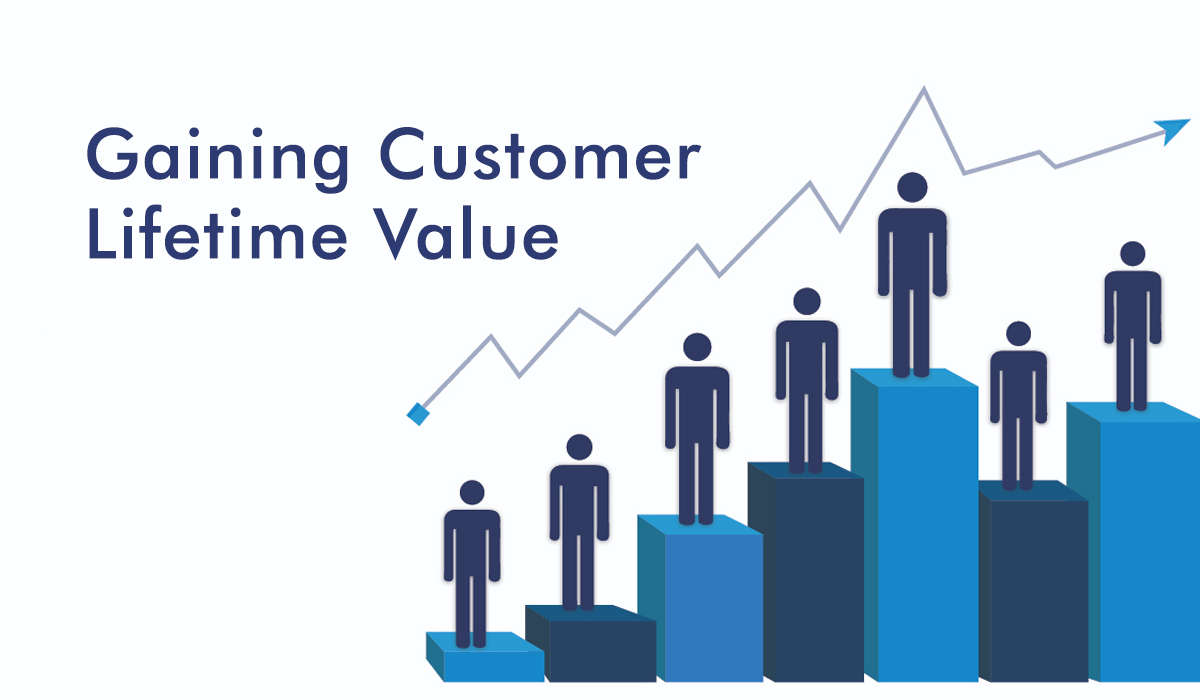There’s never been a better time to make your mark in the D2C niche. The D2C model has been gaining traction for its knack for fostering a streamlined, personalized customer experience. It also lets businesses maintain full control over their brand story. But as we gear up for 2023, strategic planning is no longer a luxury—it’s a necessity.
The reason? Well, there is a lot of competition in the niche, to be honest. So you can surely build a powerful D2C brand, but it will demand effort. More specifically, strategic efforts. And that’s what this piece of information is all about!
So without much ado, let’s dive in right away.
Assessing Your Business Health

Before we venture further into strategies and growth hacks, let’s stop for a moment. A pit stop, if you will. You wouldn’t start a road trip without checking your car first, right? So why should your business journey be any different?
This is where a business health check comes in. It’s essentially an evaluation of your business’s current performance— a comprehensive review of everything from financial health to marketing effectiveness. It’s like your business’s regular medical check-up, ensuring that everything runs smoothly and no underlying problems could derail your future plans.
But a check-up can seem daunting, right? You might be asking: “Where do I start? What do I look at?” This is where key metrics come into play. These are quantifiable measures used to track and assess the status of specific business processes.
Think of them as the ‘vitals’ in your business health check. Some of these could include customer spend, customer acquisition costs, customer lifetime value, sources of customer acquisition, and product performance.
For example, Julian Hearn, the founder of the D2C meal replacement company Huel, swears by these metrics. They’ve become his guiding force, offering him a clear-eyed view of how his business is performing. And judging by Huel’s 45-50% annual growth rates since its inception in 2015, he’s clearly onto something.
But remember, every business is unique. Your metrics might differ based on what’s most important to your D2C brand. The key is to determine which indicators give you the most meaningful insights into your business’s health.
Building a Robust SEO Strategy

SEO is like the compass that leads customers directly to your doorstep. It’s no wonder that 70% of marketers see SEO as more effective than PPC!
So, what’s the secret sauce to SEO success in the ever-changing D2C landscape? It’s all about laying the groundwork early on and fostering an organic relationship with your customers. Remember, the power of SEO doesn’t show unless you start early.
Here are some steps to develop an effective SEO strategy:
- Know your keywords: Your keywords are your breadcrumbs leading customers to your business. Start with keyword research to understand what your customers are searching for.
- Produce high-quality content: SEO is not just about keywords. It’s about delivering valuable content that answers your customers’ queries.
- Optimize your website: Fast-loading pages, mobile-friendliness, and easy navigation can improve your ranking on search engine result pages (SERPs).
- Earn backlinks: Links from reputable sites not only increase your domain authority but also drive more traffic.
Take, for instance, ColourPop, a beauty brand with a powerful SEO strategy that brings in over 5 million visitors a month. Their solid SEO strategy includes building domain authority using backlinks and driving traffic through partnerships, leading to an estimated $100-500 million in web sales.
Capitalizing on Content Marketing

Let’s swerve the spotlight onto another driving force of your D2C strategy – Content Marketing. In the digital arena, content reigns supreme. As Bill Gates aptly quoted, “Content is king”. It’s the golden thread that weaves your brand’s story and connects with your audience, but it’s more than just words on a webpage. Content, when done right, can be the catalyst that skyrockets your traffic. It can amplify your brand’s presence as you have never before.
So how do we ensure that our content is not just good but great? Here are some strategies:
Tune in to your Audience: Content that strikes a chord is the content that truly matters to your readers. Get under their skin – understand their needs, their challenges, and their dreams, and then mould your content to cater to these insights.
Consistency is Key: Think of your content as a plant that thrives with regular care. Consistent content keeps your audience’s interest piqued, ensuring they stay hooked and eagerly return for more.
Dabble in Different Formats: Don’t box yourself into just text-based content. Diversify with videos, podcasts, infographics, or even interactive quizzes – these can bring a spark of life to your content, making it more engaging.
Wise Promotion and Distribution: Even the most brilliant content can underperform without strategic distribution. Be smart and utilize various channels – from social media and email marketing to guest blogging – to extend your reach to a larger audience.
The Tortuga Backpacks story is a shining example here. Despite limited resources, the brand built a multi-million business using content marketing to drive organic search traffic, using popular platforms’ best and refreshing their best-performing posts.
Taking the Plunge into the Data Analytics

As we navigate the exhilarating journey to Direct-to-Consumer (D2C) triumph, let’s consider data analytics our reliable GPS. This remarkable tool directs us unerringly toward our goals, allowing us to utilize data to shape our decisions and meet our business aspirations.
So, how can you make data analytics work for you? Here are some tips:
Decode your Customer Journey: You can uncover an engaging story when you analyze your customer data. This story reveals how customers connect with your brand and highlights opportunities for enriching their experience.
Fine-tune your Marketing Strategies: Reflecting on the performance of past campaigns is a fantastic learning opportunity. You can adjust and optimize future marketing efforts to resonate more effectively with your audience.
Foresee Future Trends: With predictive analytics in your arsenal, you can anticipate consumer behavior and stay ahead of your competition. It’s like having a crystal ball that reveals what lies ahead.
Based decisions on Solid Evidence: Data analytics empowers you to make decisions grounded in solid evidence. This evidence-based approach lowers risk and enhances your business performance.
Engaging with Customers on Social Media

In the pulsating digital heart of the D2C market, social media holds a prime spot. These platforms are not new, and neither are they as lucrative as they once were. But there are still billions-strong potential customers waiting for you. People are still flocking on Facebook, Twitter, Instagram, and LinkedIn. So, it’s a sort of vibrant, bustling bazaar where you can engage with customers, build your brand, and boost sales.
So, what does effective social media engagement look like? Let’s dive into some best practices:
Be Social: Interact with your followers, respond to their comments, encourage discussions, and be an active participant, not just a broadcaster.
Tailor Your Content: Each social platform has its unique features and audience. Create and adapt your content to align with the specific requirements and demographics of each platform.
Harness the Power of Visuals: A compelling visual can communicate more than a thousand words. Use appealing images, infographics, or videos to catch attention and drive engagement.
Leverage User-Generated Content (UGC): UGC, like reviews or photos shared by customers, can serve as powerful testimonials. It fosters a sense of community and authenticity around your brand.
Stay Relevant and Timely: Tap into trending topics or current events to keep your content fresh and relevant.
Social media isn’t just about promoting your brand but building relationships. It’s a two-way street, so make sure you’re listening as much as you’re speaking.
Focusing on Customer Acquisition Costs

If we consider the business landscape as a chessboard, understanding and optimizing Customer Acquisition Cost (CAC) is your strategic move. It’s the cost you incur to acquire a new customer, and it’s critical to the financial health of your D2C business. Lower CAC means higher profits, so it’s a number worth optimizing.
Here are a few strategies to reduce your CAC without compromising on quality:
Improve Your Website’s User Experience (UX): A user-friendly, easy-to-navigate website can boost conversions and lower your CAC.
Optimize Your SEO: By attracting organic traffic, you can reduce your dependence on paid ads and hence lower your CAC.
Leverage Referral Marketing: Encourage your existing customers to refer others. It’s cost-effective and often results in high-quality leads.
Focus on Customer Retention: It’s cheaper to retain an existing customer than to acquire a new one. Implement strategies for customer loyalty, such as excellent customer service, loyalty programs, or regular communication.
Heard of FactoryPure? They managed to optimize their CAC by investing in long-tail keywords tailored to users ready to buy. By making strategic decisions like these, you, too, can strike a balance between cost-effectiveness and customer acquisition.
By focusing on these areas – social media engagement and customer acquisition cost – you can further refine your D2C growth strategy for 2023.
Gaining Customer Lifetime Value

If you really want your D2C business to blast off, you cannot rely just on new customers. Enter the concept of Customer Lifetime Value (CLV). CLV is the total revenue you can expect from a single customer account. This focuses on the customer’s revenue value and compares that number to the company’s predicted customer lifespan. Businesses use this prediction to identify significant customer segments that are the most valuable to the company.
So, how can you swell up your CLV? Here are a few ways:
Prioritize Customer Satisfaction: Ensure your customers are content with your products and services. Satisfied customers are more likely to stick around and make repeat purchases.
Implement Loyalty Programs: Rewarding your customers for their loyalty encourages repeat business. This could be in the form of discounts, special sales, or reward points.
Upsell and Cross-sell: Promote relevant products or services to existing customers. If done correctly, upselling or cross-selling can increase the amount each customer spends per transaction.
Remember, it costs more to acquire a new customer than to retain an existing one, making CLV a crucial aspect of your growth strategy.
Harnessing the Power of Partnerships

Partnerships and collaborations can serve as a catalyst for your business growth. They allow you to tap into new customer bases, share resources, and bolster your brand reputation.
Here’s how you can establish and foster successful partnerships:
Identify the Right Partners: Choose partners who complement your brand and share similar values. They should also have a customer base that could potentially be interested in your products or services.
Align on Goals and Expectations: Ensure you and your partner have clear, agreed-upon objectives. This alignment helps avoid misunderstandings down the line.
Communicate Regularly: Maintain open lines of communication with your partners. Regular check-ins and updates help keep everyone on the same page and foster a positive working relationship.
Measure and Adapt: Monitor the partnership’s performance using pre-determined KPIs. Be ready to adapt and tweak the partnership terms as needed.
Partnerships aren’t just business transactions; they’re about building long-term relationships that offer mutual benefits.
Implementing a Paid Search Strategy

SEO plays a vital role in propelling long-term growth, but pairing it with a robust paid search strategy can set you on the path to medium-term revenue spikes. Platforms like Google Ads or Bing Ads can be your secret weapons to connect with your target audience promptly and efficiently. How does it work? You place bids on keywords tied to your offerings, and voilà, your ads take the prime spot atop search engine results.
Here’s how you can tailor your paid search strategy for maximum impact:
Choose the Right Keywords: Target specific, long-tail keywords that your potential customers are likely to use. These keywords are typically less competitive and more cost-effective.
Test and Optimize Your Ads: Experiment with different ad formats, messages, and landing pages. Use data to refine your ads for better performance.
Track Your Performance: Monitor your ads’ performance closely and make data-driven decisions.
Paid search is all about reaching the right people at the right time with the right message. With strategic planning and continuous optimization, you can make the most of your ad spend.
Juggling Product Development and Marketing

Product development and marketing are like two sides of the same coin. While product development focuses on creating products that meet customer needs, marketing aims to communicate these solutions to the right audience.
Here’s how these two functions can work together for brand-building success:
Customer Insights: Use insights from marketing campaigns to inform product development. These insights could include customer preferences, pain points, or market trends.
Product Messaging: Collaborate on crafting compelling product messages that resonate with your target audience.
Launch Strategy: Coordinate your product launches with marketing campaigns to maximize reach and impact.
A great example of this interplay is Apple. Their close collaboration between product development and marketing has helped them create innovative products and market them successfully. This has resulted in a strong, globally recognized brand.
Success doesn’t come overnight. It’s a process of continuous learning, adapting, and growing. So stay focused on your product development and its marketing, and it will bear the results.
Conclusion
Pheww, that was one long and very deep dive into the D2C world! We hope now you have a clear idea of what it takes to build a compelling D2C brand in 2023. Look, you should remember that implementing these strategies takes time. Moreover, you cannot expect these strategies to deliver results overnight. So focus on your business, devise custom D2C strategies, and keep churning out amazing results!
Need some assistance or additional info with building your D2C business? Don’t hesitate; all you need to do is reach out to us, and our experts at CESPL are here to help.

